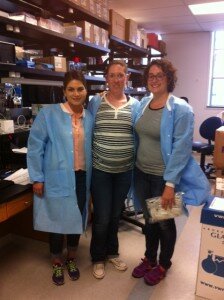What is biomonitoring?
Biomonitoring is the measurement of environmental chemicals in human blood, urine and tissue. Both naturally-occurring and human created chemicals can be measured, along with their breakdown products, and their “fingerprints” or “biomarkers” that indicate changes in biological processes created by chemical exposures. The presence of environmental chemicals in blood, urine or tissues does not necessarily mean a person will get sick. Other research is needed to determine how a chemical might affect health. People are more or less susceptible to the effects of a toxic chemical depending when exposure occurs and for how long, genetic inheritance, nutrition & exercise, past infections, gender, and a myriad of other factors. Many exposures are especially potent early in life.
The U.S. Centers for Disease Control has studied the environmental chemicals in people’s bodies since 1998. Their research has found that all of us have small amounts of environmental chemicals in our body. Exposures can occur through food, water, air and skin contact with dust or household products. Furthermore, some environmental chemicals stay in our bodies for decades. Other chemicals are eliminated in a matter of hours. Biomonitoring can determine the amount of chemicals in your body at a given time, which provides a snapshot of chemical exposures.
Firefighters may have greater exposure to environmental chemicals because of their occupation. They may be exposed to chemical flame retardants through dust in fire houses and on equipment. Toxic chemicals produced during a fire include carcinogens such as dioxins and furans and polycyclic aromatic hydrocarbons (PAHs), which are also carcinogenic. This study will test firefighter blood and urine for a wide variety of flame retardants, and also perfluorinated chemicals, PAHs, and other chemicals linked to health concerns.

